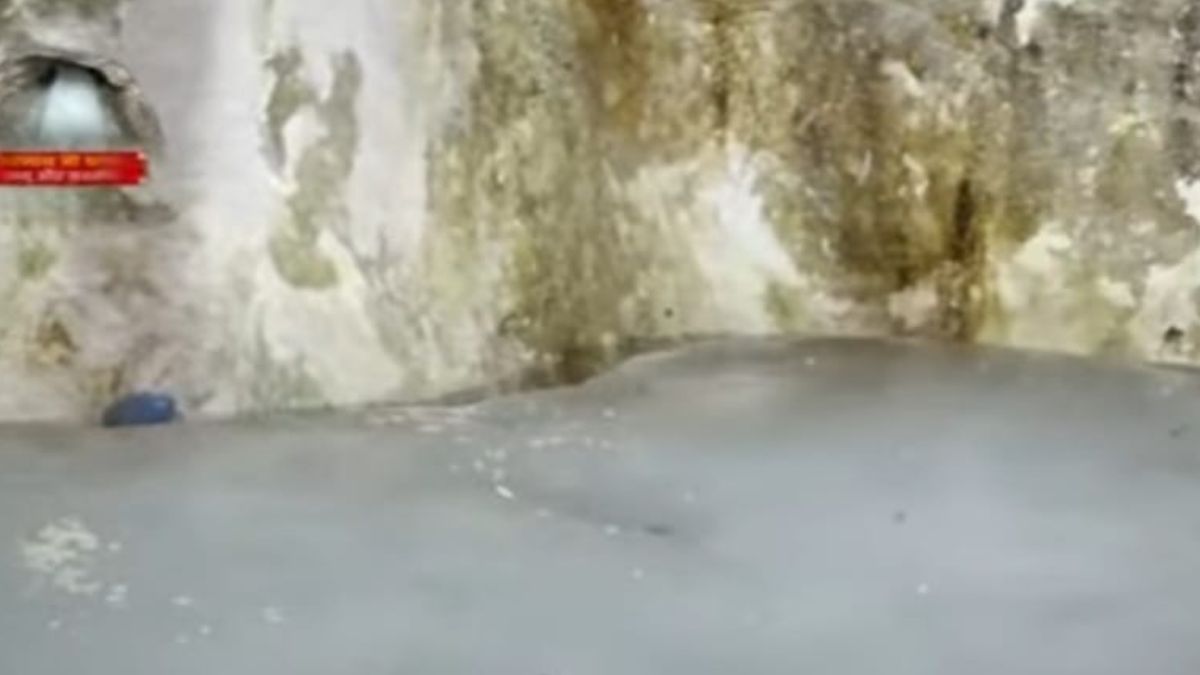The ongoing severe heat conditions in Kashmir have impacted the annual Amarnath Yatra, causing the natural ice Shiv-Lingam, a revered symbol of Lord Shiva, to melt rapidly within the first 10 days of the pilgrimage.
This year, the early melting of the naturally formed ice Shiva Lingam in the Amarnath cave temple is attributed to the extreme heatwave in Kashmir, which has profoundly affected the annual pilgrimage. Pilgrims returning from the holy cave today reported that the sacred symbol has almost completely melted.

The annual Amarnath Yatra began on July 3, and only 10 days have passed. Reports indicate that the Shiva Lingam, which historically stood 12 to 15 feet tall, has now nearly entirely melted, leaving only the base of the ice—considered to be the feet of Lord Shiva—remaining in the holy cave. This marks one of the fastest melting incidents in the recent history of the Amarnath Yatra.
Despite the absence of the Shiva Lingam, over 1.70 lakh pilgrims have visited the 3,880-meter-high holy cave located in the southern Himalayas by July 12. With 26 days still left for the sacred pilgrimage, the melting of the Lingam has not diminished the faith of the devotees. Many acknowledge that while the Lingam has melted, they continue their pilgrimage, reflecting their spiritual devotion to the holy site. Thousands of devotees are still making their way to the sacred cave, chanting “Har Har Mahadev” and “Bam Bam Bhole” as they complete their journey.

A group of pilgrims who have completed their journey told News24, “Our journey started on the 5th, and we reached Baltal on the 7th, where we had darshan of Baba the next day. The facilities there are very good, and security is tight.” Another pilgrim added, “We had darshan on July 9. This is my second trip, but this time the facilities were very good. The Shiva Lingam has melted, but we came with faith and are satisfied. People should come to see Lord Shiva.”
The duration of the Shiva Lingam has been decreasing over recent years due to regional climate change. In 2022, it lasted for 28 days; in 2023, it melted in 22 days; in 2024, it melted in 16 days; and now in 2025, it has melted within just 10 days of the yatra.
Weather experts in Kashmir have said that glaciers near the Amarnath cave are melting, and there has been no systematic research conducted since the 1980s to assess their response to climate change. Glaciers in the valley, including five near the holy cave shrine, are shrinking, affecting water availability, reducing snowfall, and increasing temperatures—all contributing factors to the rapid melting of the Shiva Lingam. Additionally, heavy human intervention when the yatra begins also raises temperatures, further contributing to the swift melting of the ice Lingam.
This year’s weather patterns in the Kashmir Valley have been markedly different. There has been a nearly 60-70% reduction in rainfall and snowfall during both summer and winter. Furthermore, temperatures have broken all previous records; Srinagar recorded its highest temperature since 1953 at 37.4 degrees Celsius. The intense heat and reduced snowfall along pilgrimage routes have created dusty and dry conditions, contrasting sharply with previously glacier-filled paths.












